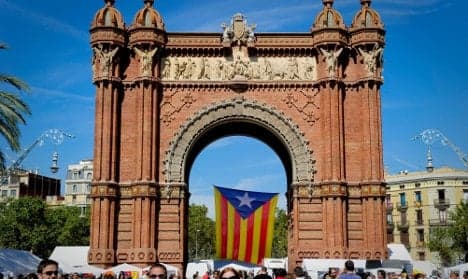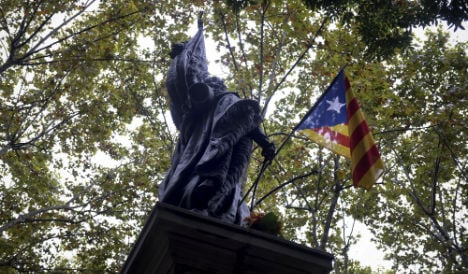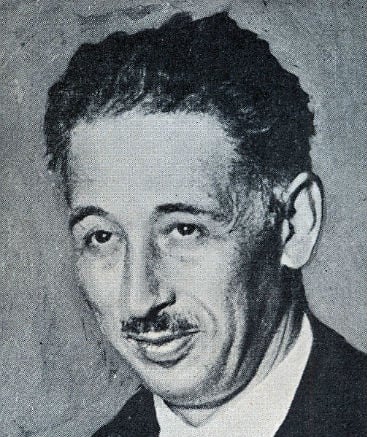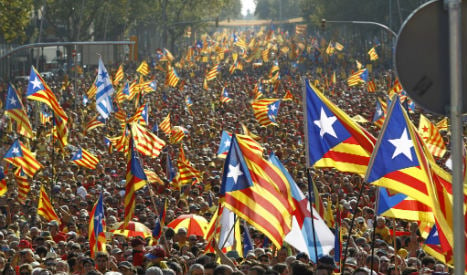An historical look at the drive for Catalan independence

As tens of thousands turn out to march for independence, Catalan historian and separatist campaigner Simon Harris argues that the desire for self-government goes back centuries.
September 11th, 1714
It is generally accepted that Catalonia effectively became part of Spain when lost its charters and institutions on September 11th 1714, when Barcelona fell to Felipe V's Franco-Castilian army following a 15-month siege, an event that is commemorated each year with La Diada.
By the middle of the 19th century, along with the Basque Country, Catalonia was one of the few parts of Spain to have become industrialised and this in turn led to the growth of an educated middle class, who not only resented government intervention from backward-looking Madrid but also began to recover a sense of national identity based on the glories of the medieval Catalan empire.
At the same time, the Catalan language underwent a cultural and literary renaissance known as the Renaixença.

The statue commemorating Rafael de Casanovas where flowers are laid each Diada. Photo: AFP
The birth of Catalanism
After the failure of the First Spanish Republic in 1874, which incidentally was the last time Spain had a Catalan President, a political movement known as Catalanism began to develop and Catalan politicians began to prioritise regional issues rather than Spain as a whole.
The final straw came in 1898, when Spain lost the last of its foreign colonies because not only had a disproportionate number of Catalan conscripts died in the conflict but the Catalan business class had major interests in Cuba so lack of confidence in Madrid and calls for self-government increased.
Poet Joan Maragall published his Ode to Spain with its famous "Adéu, Espanya" refrain and Catalanist political parties on both the left and right consistently dominated municipal elections and also formed a powerful lobby in the Cortes in Madrid.
Mancomunitat de Catalunya
The first experiment in Catalan autonomy came in 1914 with the creation of the Mancomunitat de Catalunya under the presidency of Enric Prat de la Riba.
The Mancomunitat brought the four Catalan provinces of Barcelona, Girona, Tarragona and Lleida together to coordinate resources and although it was abolished by Spain's first 20th century dictator, Miguel Primo de Rivera in 1925.
In its decade of existence, the Mancomunitat significantly modernised roads, ports, railways and hydraulic works in Catalonia as well as setting up educational institutions and providing basic health services.
With the advent of the Second Republic in 1931, Francesc Macià declared the Catalan Republic but was later persuaded by the republican government to remain part of Spain in return for the restoration of the Generalitat of Catalonia of which he became the first President since 1714.

Lluis Companys, leader of Catalonia during the Spanish Civil War. Wikimedia
In 1934, Macià's successor, Lluís Companys declared the independent Catalan State once again and was promptly arrested by the right-wing CEDA government.
Spanish Civil War and dictatorship of Gen Francisco Franco
Companys was released in 1936 and presided over the Generalitat throughout the Spanish Civil War.
Barcelona was captured by Franco's Nationalist rebels in early 1936 and the whole of Spain was soon thrown into a dark period of repression.
This was particularly severe in Catalonia, where thousands were executed, imprisoned or fled into exile. Catalan political institutions were abolished again and Catalan symbols, including the language, were removed from public life.
Modern Spain
Following the dictator's death in 1975, the Catalans had high hopes that they would be recognised as a nation in the new constitution. However, with the threat of a military coup from Franco's old guard ever present, Catalonia accepted the denomination "nationality" and its status was even further limited with the creation of 17 Autonomous Communities, including regions of Spain that had never made any claim to nationhood.
After 25 years of political stability, the Parliament of Catalonia decided that it was time to vindicate some of the rights it had foregone in 1978 and began to draw up a new Catalan Statute of Autonomy.
A watered down version of the Estatut was passed by the Spanish Congress in 2005 and after being approved by referendum in Catalonia, it became law in July 2006.
A number of Spanish institutions, led by the Partido Popular, immediately brought the Estatut before the Constitutional Court.
The Constitutional Court finally made its ruling in June 2010 and large parts of the Estatut were declared unconstitutional or inapplicable.
The result was the first major demonstration in Barcelona on July 10th 2010, when a million people marched under the banner "We are a nation. We decide."
The rise of separatism

Photo: AFP
Since then three Diadas or Catalan National Days have brought more than 1.5 million people out onto the streets every September 11th and in the unofficial consultation on November 9th, 2014 1.8 million Catalans voted in favour of independence.
After winning a clear majority in Catalonia's regional parliament last year, secessionist parties approved a plan to achieve independence in mid-2017.
Simon Harris is the author of Catalonia Is Not Spain: A Historical Perspective (2014) and Going Native in Catalonia (2007). Originally from Nottingham in England he has lived in the Sant Andreu District of Barcelona since 1988 and is an active campaigner for Catalan independence supporting the ANC and CUP.
A version of this article first appeared on The Local in September 2015
Comments
See Also
September 11th, 1714
It is generally accepted that Catalonia effectively became part of Spain when lost its charters and institutions on September 11th 1714, when Barcelona fell to Felipe V's Franco-Castilian army following a 15-month siege, an event that is commemorated each year with La Diada.
By the middle of the 19th century, along with the Basque Country, Catalonia was one of the few parts of Spain to have become industrialised and this in turn led to the growth of an educated middle class, who not only resented government intervention from backward-looking Madrid but also began to recover a sense of national identity based on the glories of the medieval Catalan empire.
At the same time, the Catalan language underwent a cultural and literary renaissance known as the Renaixença.

The statue commemorating Rafael de Casanovas where flowers are laid each Diada. Photo: AFP
The birth of Catalanism
After the failure of the First Spanish Republic in 1874, which incidentally was the last time Spain had a Catalan President, a political movement known as Catalanism began to develop and Catalan politicians began to prioritise regional issues rather than Spain as a whole.
The final straw came in 1898, when Spain lost the last of its foreign colonies because not only had a disproportionate number of Catalan conscripts died in the conflict but the Catalan business class had major interests in Cuba so lack of confidence in Madrid and calls for self-government increased.
Poet Joan Maragall published his Ode to Spain with its famous "Adéu, Espanya" refrain and Catalanist political parties on both the left and right consistently dominated municipal elections and also formed a powerful lobby in the Cortes in Madrid.
Mancomunitat de Catalunya
The first experiment in Catalan autonomy came in 1914 with the creation of the Mancomunitat de Catalunya under the presidency of Enric Prat de la Riba.
The Mancomunitat brought the four Catalan provinces of Barcelona, Girona, Tarragona and Lleida together to coordinate resources and although it was abolished by Spain's first 20th century dictator, Miguel Primo de Rivera in 1925.
In its decade of existence, the Mancomunitat significantly modernised roads, ports, railways and hydraulic works in Catalonia as well as setting up educational institutions and providing basic health services.
With the advent of the Second Republic in 1931, Francesc Macià declared the Catalan Republic but was later persuaded by the republican government to remain part of Spain in return for the restoration of the Generalitat of Catalonia of which he became the first President since 1714.

Lluis Companys, leader of Catalonia during the Spanish Civil War. Wikimedia
In 1934, Macià's successor, Lluís Companys declared the independent Catalan State once again and was promptly arrested by the right-wing CEDA government.
Spanish Civil War and dictatorship of Gen Francisco Franco
Companys was released in 1936 and presided over the Generalitat throughout the Spanish Civil War.
Barcelona was captured by Franco's Nationalist rebels in early 1936 and the whole of Spain was soon thrown into a dark period of repression.
This was particularly severe in Catalonia, where thousands were executed, imprisoned or fled into exile. Catalan political institutions were abolished again and Catalan symbols, including the language, were removed from public life.
Modern Spain
Following the dictator's death in 1975, the Catalans had high hopes that they would be recognised as a nation in the new constitution. However, with the threat of a military coup from Franco's old guard ever present, Catalonia accepted the denomination "nationality" and its status was even further limited with the creation of 17 Autonomous Communities, including regions of Spain that had never made any claim to nationhood.
After 25 years of political stability, the Parliament of Catalonia decided that it was time to vindicate some of the rights it had foregone in 1978 and began to draw up a new Catalan Statute of Autonomy.
A watered down version of the Estatut was passed by the Spanish Congress in 2005 and after being approved by referendum in Catalonia, it became law in July 2006.
A number of Spanish institutions, led by the Partido Popular, immediately brought the Estatut before the Constitutional Court.
The Constitutional Court finally made its ruling in June 2010 and large parts of the Estatut were declared unconstitutional or inapplicable.
The result was the first major demonstration in Barcelona on July 10th 2010, when a million people marched under the banner "We are a nation. We decide."
The rise of separatism

Photo: AFP
Since then three Diadas or Catalan National Days have brought more than 1.5 million people out onto the streets every September 11th and in the unofficial consultation on November 9th, 2014 1.8 million Catalans voted in favour of independence.
After winning a clear majority in Catalonia's regional parliament last year, secessionist parties approved a plan to achieve independence in mid-2017.
Simon Harris is the author of Catalonia Is Not Spain: A Historical Perspective (2014) and Going Native in Catalonia (2007). Originally from Nottingham in England he has lived in the Sant Andreu District of Barcelona since 1988 and is an active campaigner for Catalan independence supporting the ANC and CUP.
A version of this article first appeared on The Local in September 2015
Join the conversation in our comments section below. Share your own views and experience and if you have a question or suggestion for our journalists then email us at [email protected].
Please keep comments civil, constructive and on topic – and make sure to read our terms of use before getting involved.
Please log in here to leave a comment.